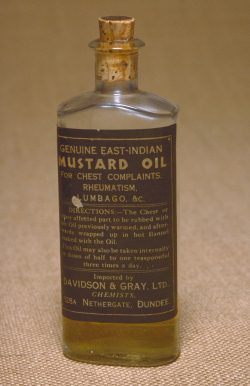Cabinet of Curiosity to open at University
Published On Mon 17 Mar 2014 by Grant Hill

A ‘Cabinet of Curiosity’ will be opened this week when highlights from the Tayside Medical History Museum go on display at the University of Dundee’s Lamb Gallery.
Opening on Wednesday, 19th March, the exhibition features dozens of items from one of the most outstanding medical collections in Scotland. The Tayside Medical History Museum includes material from Dundee Royal Infirmary, Royal Dundee Liff Hospital, Ninewells Hospital and Sunnyside Hospital among others. The museum opened at Ninewells in 1989 but is currently closed for redevelopment as part of the on-going refurbishment of the School of Medicine.
“We intend to create a new version of the museum outside the main lecture theatre at Ninewells,” explained University museum curator Matthew Jarron. “We have just started fund-raising for this but in the meantime, we’re keen get some of this fascinating material out on show for a wider audience.”
Dundee’s more recent medical heroes such as Sir Alfred Cuschieri and Sir James Black are well-known, as is the city’s leading role in cancer and diabetes research. The collections on show in this exhibition reveal a much longer history of medical breakthroughs and pioneering treatment, such as Dundee’s first dedicated cancer research centre which was founded in 1906 thanks to funding from Sir James Caird. Dr Archibald Leitch was appointed as the city’s first cancer specialist.
Other stories told in the exhibition include Dundee’s pioneering role in X-ray experiments, which began within months of their discovery in Germany. At Dundee Royal Infirmary, Dr George Pirie undertook numerous experiments, repeatedly X-raying his own hands unaware of the dangers. A bottle of mustard oil used by Pirie to rub on his hands to soothe the pain is featured in the exhibition, although it was to prove of little use as both his hands eventually had to be amputated.
The exhibition also highlights the ground-breaking research of Dr James Riley, whose work in Dundee demonstrated that the mast cell granule was the major source of histamine in the body, revolutionising the understanding of inflammatory and allergic reactions. Riley's research made him an internationally respected authority on the subject, and his original lab equipment is included in the exhibition.
As well as stories of breakthrough discoveries, the exhibition features a wealth of everyday objects from local hospitals and pharmacists, from a 1960s nurses' uniform to an Edwardian necklace that supposedly cured asthma.
The exhibition will be on show until 20th May, while work will be on-going during the year to develop the new Medical History Museum at Ninewells.
For further information contact Matthew Jarron on 01382 384310 or museum@dundee.ac.uk.
For media enquiries contact:
Grant Hill
Press Officer
University of Dundee
Nethergate, Dundee, DD1 4HN
TEL: 01382 384768
E-MAIL: g.hill@dundee.ac.uk
MOBILE: 07854 953277 / 07581534927